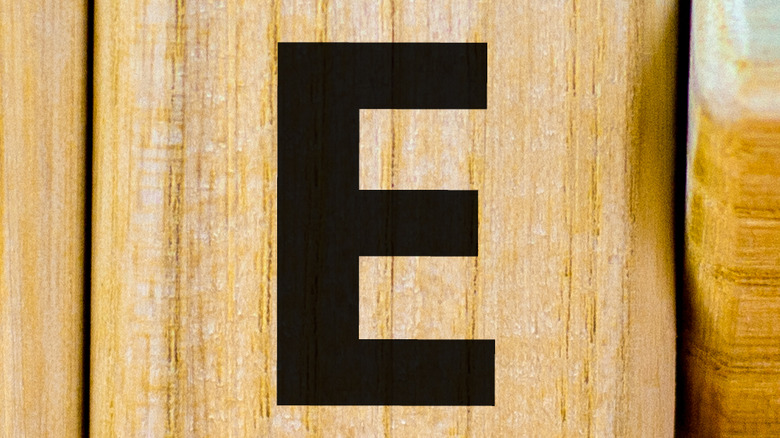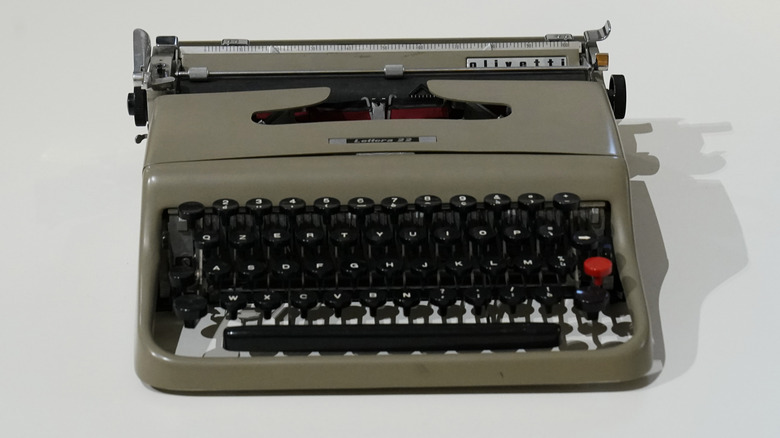The Reason Why One Novel Famously Does Not Contain The Letter E
As many might expect, the most commonly used letter in the English lexicon is "e," as one write-up by Reader's Digest humorously noted in January 2022. Considering how crucial the letter "e" can be, here's a fun thought exercise. If you can, imagine yourself a writer. You've been charged with the task of producing a novel for all the world to enjoy. It can be about anything you want, and you can take as much time as you need to get it done. Maybe you've got a perfect concept and you're ready to go, but wait — there's one caveat. You guessed it: You're not allowed to use the letter "e."
Seems completely undoable, right? You could say that it even borders on impossible. Just take a moment and scan the sentences of this very article, and note how many times "e" has been used already. Nobody would hold it against you if you flat out resolved that writing a book without utilizing the most commonly used letter in the English language is entirely unachievable. Well, there's a small factor that needs to be considered... not only can it be done — it's already been done before at least once.
Letter-wise, Gadsby by Ernest Vincent Wright has a pretty big omission
In 1939, Ernest Vincent Wright pulled off what most would assume is a fool's errand by writing and self-publishing an entire novel without using the letter "e." According to an article published by the rare books/literature blog Abe Books in June 2021, "Gadsby" is comprised of no less than 50,110 words, and not a single one of them is constructed using the most commonly used alphabetical character in the English language.
To write his self-published lipogram (the word for a text which is written with the purpose of excluding a letter from the alphabet, per ThoughtCo.), Wright had to circumnavigate a few obvious pitfalls, per Abe Books. He omitted past-tense phrasing ("-ed") and substituted common words containing "e" with other descriptors. For instance," "turkey" became "Thanksgiving national bird," and "wedding cake" was changed to "an astonishing loaf of culinary art." He also avoided pronouns like "he," she," and "they." It wasn't a perfect system — to stick to the ethos of the project, Wright purportedly tied down the "e" letter key on his typewriter to render it obsolete for use, a fact he included in the introduction for "Gadsby" – but it evidently worked well enough to suit Wright's purposes.
What is Ernest Vincent Wright's book Gadsby about?
While Ernest Vincent Wright's lipogram wasn't necessarily a feat admired by all — according to Wright himself, he once "received one most scathing epistle from a lady, denouncing me as a 'genuine fake,'" for thinking the project could be carried out successfully — it managed to garner a cult status among fans (via Abe Books). "Gadsby" — not to be confused with F. Scott Fitzgerald's "The Great Gatsby" — tells the story of John Gadsby, an ambitious middle-aged native of Branton Hills. In order to prevent the degradation of his beloved hometown, Gadsby commissions a troupe of youngsters to help him turn things around and improve living conditions for future generations. Beginning in 1906, the plot of "Gadsby" spans approximately 20 years — a pretty big undertaking, both narratively and technically. Unfortunately, it succeeds at only one of the two.
While "Gadsby" certainly achieves what it sets out to do structurally as a lipogram, it's understandably not the most comprehensive or cohesive story, given its linguistic limitations. However, the completion of the work itself as a technical feat was something Wright took great pride in following its release. Being that "Gadsby" was self-published without the backing of a commercial house, the book's popularity gradually grew, per Abe Books. So, if you ever find yourself enveloped in a sense of self-doubt, just remember that some goofball in the 1930s successfully managed to write an entire novel without using the letter "e." From there, take that for what you will!


